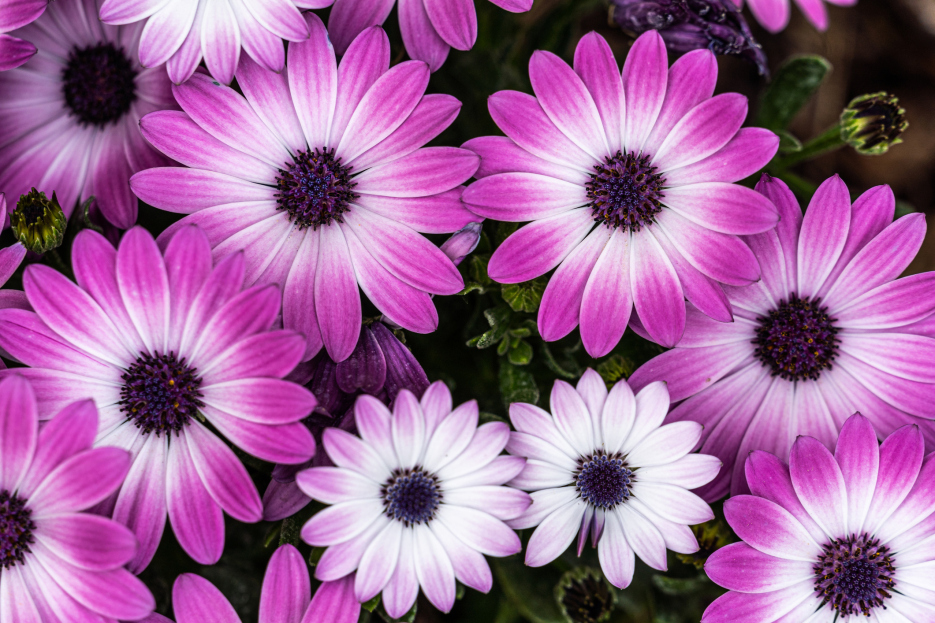
With their vibrant, daisy-like blooms and a color palette that spans from soft pastels to electric purples and sunny yellows, Osteospermum—commonly known as African Daisy—brings bold beauty to any garden or container. These sun-loving perennials (often grown as annuals in cooler climates) are native to South Africa and prized for their long-lasting flowers and ability to thrive in heat and sun.
Whether you're planting them in garden beds, hanging baskets, or patio pots, Osteospermum adds a cheerful, eye-catching touch. Here’s how to care for this blooming beauty:
Osteospermum thrives in full sun. The more sunshine it gets, the more blooms you’ll see. In areas with hot summers, some light afternoon shade can help prevent flower fatigue, but generally, this plant loves as much sun as you can give it.
In lower light or overly shaded areas, Osteospermum may stop blooming or become leggy.
While Osteospermum is relatively drought-tolerant once established, it prefers moderate, consistent watering. Keep the soil evenly moist but never soggy. Allow the top inch of soil to dry out between waterings.
In containers, check more frequently, especially in hot weather, as pots tend to dry out faster.
Plant in well-draining soil. Osteospermum dislikes sitting in wet soil, which can lead to root rot. A sandy or loamy mix enriched with compost is ideal. For containers, use a high-quality potting mix with added perlite for drainage.
Good drainage is key, so be sure pots have holes at the bottom.
Feed Osteospermum every 2–4 weeks during the growing season with a balanced, water-soluble fertilizer. This will keep the blooms coming and the foliage lush. In rich garden soil, less feeding may be needed.
Avoid overfeeding, especially with high-nitrogen formulas, which can lead to more leaves than flowers.
Osteospermum thrives in cool to warm climates but struggles in extreme heat. It performs best in temperatures between 55–75°F (13–24°C). In very hot regions, flowering may slow during peak summer but often resumes in cooler fall weather.
In USDA zones 9–11, Osteospermum can behave as a short-lived perennial. In colder zones, treat it as an annual or overwinter it indoors.
To encourage continuous blooming, regularly deadhead spent flowers. This redirects energy into producing new blooms instead of seeds.
If plants become leggy or spindly, give them a light trim or pinch back to promote fuller growth and fresh flower production.
Osteospermum is fairly resistant to pests and diseases, especially when grown in well-ventilated areas with proper drainage. Watch for aphids, spider mites, or powdery mildew in humid conditions.
Treat pests with insecticidal soap or neem oil as needed, and avoid overhead watering to minimize fungal issues.
Osteospermum can be propagated from cuttings or seeds. Take softwood cuttings in late summer or early spring and root them in moist soil. If starting from seed, sow indoors 6–8 weeks before the last frost date for earlier blooms.
Some hybrid varieties may not grow true to type from seed, so cuttings are best for exact replicas.
Osteospermum is considered non-toxic to cats, dogs, and other common household pets. This makes it a great choice for pet-friendly gardens and containers. However, as with any plant, it’s still best to discourage curious nibblers to avoid any mild stomach upset from ingesting plant material.